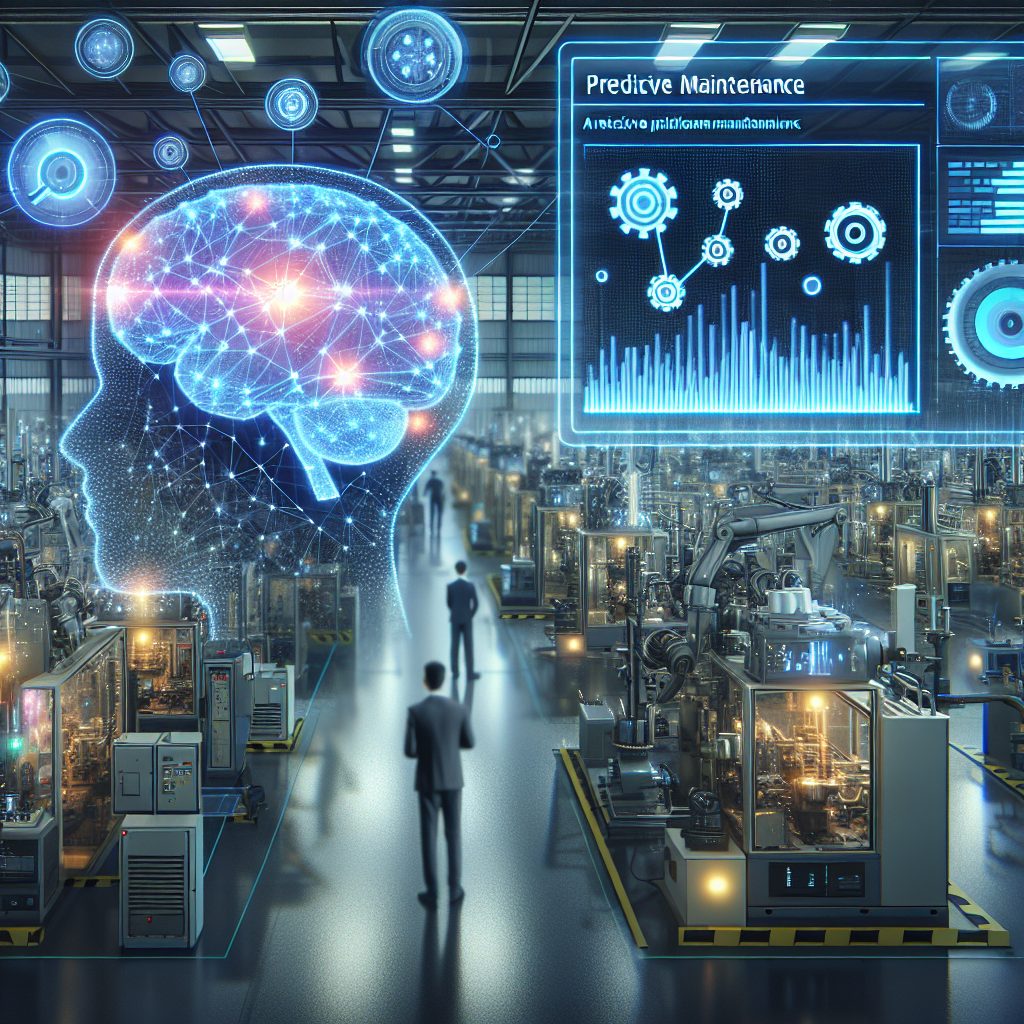Artificial Intelligence (AI) and Predictive Maintenance in Manufacturing
In recent years, the manufacturing industry has witnessed a significant transformation with the advent of Artificial Intelligence (AI) and predictive maintenance technologies. These technologies have revolutionized the way manufacturers monitor and maintain their equipment, leading to improved efficiency, reduced downtime, and increased productivity.
AI in manufacturing refers to the use of advanced algorithms to analyze data and make predictions about machine performance. Predictive maintenance, on the other hand, is a proactive approach to maintenance that involves monitoring equipment in real-time to predict when maintenance is needed before a breakdown occurs. When these two technologies are combined, manufacturers can optimize their maintenance schedules, reduce costs, and extend the lifespan of their equipment.
The Benefits of AI and Predictive Maintenance in Manufacturing
There are several key benefits of using AI and predictive maintenance in manufacturing:
1. Increased Efficiency: By using AI algorithms to analyze data from sensors and other sources, manufacturers can identify patterns and trends that indicate when equipment is likely to fail. This allows them to schedule maintenance at the optimal time, reducing downtime and increasing overall efficiency.
2. Cost Savings: Predictive maintenance can help manufacturers avoid costly breakdowns and repairs by addressing issues before they become critical. This can lead to significant cost savings in terms of maintenance and repair expenses.
3. Extended Equipment Lifespan: By proactively monitoring equipment and addressing issues before they escalate, manufacturers can extend the lifespan of their equipment. This can help them maximize their return on investment and reduce the need for frequent equipment replacements.
4. Improved Safety: Predictive maintenance can also improve safety in manufacturing facilities by reducing the risk of accidents and equipment failures. By addressing maintenance issues before they become critical, manufacturers can create a safer working environment for their employees.
5. Data-Driven Decision Making: AI and predictive maintenance technologies generate a wealth of data that can be used to make informed decisions about maintenance schedules, equipment performance, and overall plant operations. This data-driven approach can help manufacturers optimize their processes and improve overall efficiency.
FAQs
Q: How does AI technology work in predictive maintenance?
A: AI technology uses advanced algorithms to analyze data from sensors, equipment, and other sources to predict when maintenance is needed. By monitoring equipment in real-time and identifying patterns and trends, AI can help manufacturers optimize their maintenance schedules and reduce downtime.
Q: What are the challenges of implementing AI and predictive maintenance in manufacturing?
A: Some of the challenges of implementing AI and predictive maintenance in manufacturing include the cost of implementing these technologies, the need for specialized skills to analyze and interpret data, and the potential resistance from employees who may be skeptical of new technologies.
Q: How can manufacturers get started with AI and predictive maintenance?
A: Manufacturers can get started with AI and predictive maintenance by identifying their maintenance needs, evaluating their current equipment and data collection processes, and selecting the right technology solutions for their specific requirements. It is also important to train employees on how to use these technologies effectively and integrate them into existing maintenance workflows.
Q: What are some examples of AI applications in predictive maintenance?
A: Some examples of AI applications in predictive maintenance include using machine learning algorithms to analyze data from sensors and predict equipment failures, using natural language processing to analyze maintenance logs and identify trends, and using computer vision to monitor equipment performance in real-time.
Q: How can AI and predictive maintenance help manufacturers improve their overall efficiency?
A: AI and predictive maintenance can help manufacturers improve their overall efficiency by optimizing maintenance schedules, reducing downtime, and extending the lifespan of their equipment. By proactively monitoring equipment and addressing issues before they become critical, manufacturers can increase productivity and reduce costs.
In conclusion, AI and predictive maintenance technologies have the potential to revolutionize the manufacturing industry by improving efficiency, reducing costs, and extending the lifespan of equipment. By leveraging these technologies, manufacturers can stay ahead of the competition and create a safer, more efficient working environment for their employees.

